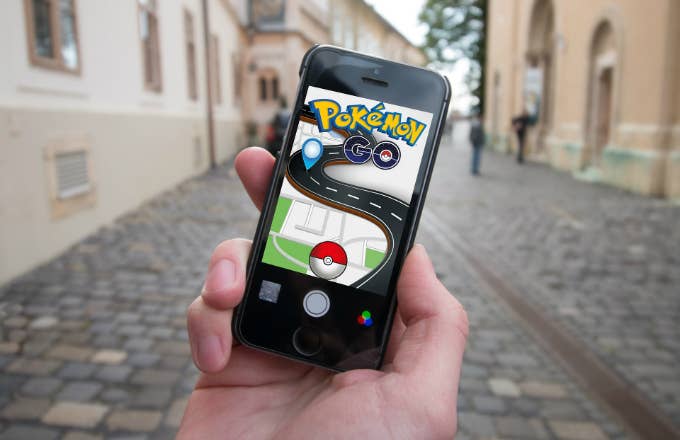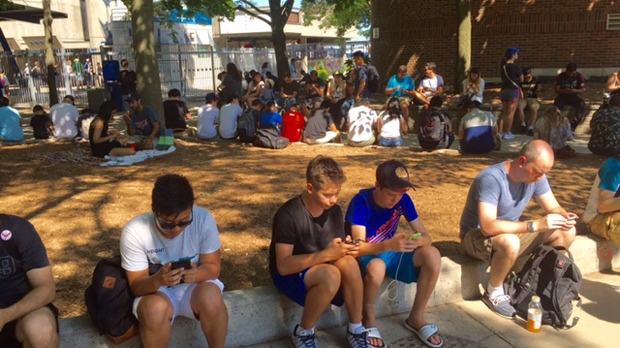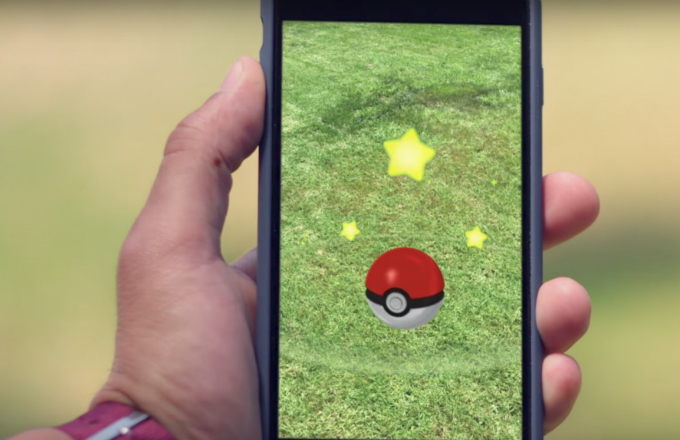
While walking home from work playing Pokemon GO (like many others during the summer of 2016), I was approached by a frantic young kid wearing a Bulbasaur hat. He raced towards me holding his phone in the air and his stance—an abrupt stop in the middle of the street with eyes locked on his iPhone—immediately gave him away. Before long we were chatting about Pokemon we’d caught, swapping screens and stories. When we parted ways, I was shook by how closely this exchange mirrored nearly every encounter in the main series game itself. Often a glance is all it takes to ignite a full-blown battle—or, a conversation not completely worth having. Pokemon Go was becoming way more than just a game—the phenomenon was bleeding into real life.
Pokemon GO was released on July 6, 2016 by Niantic Labs, Nintendo, and The Pokemon Company and, within just a few weeks, half the world (or at least it seemed) was off gallivanting head down in a full-fledged Pokemon adventure. Notwithstanding the technological impact of introducing an augmented reality mobile game to the mainstream, its social and cultural impact was—and still largely is—unmatched. The game fueled the local economy, with conveniently placed Pokestops driving people to businesses. Distracted players caused a commotion on the streets, leading to an influx of car accidents. Hell, then-presidential candidate Hillary Clinton even name-dropped the game in a (mostly failed) effort to remain hip with young voters. If even for a short time, Pokemon GO entirely dominated pop culture.
Dronpes, a founder of the major resource hub ‘The Silph Road’ for all things Pokemon GO, believes the game’s uncommon success is owed to two things—branding and hype. “The power of the Pokemon franchise was the primary reason Pokemon GO became an overnight hit,” he says. “Second, it's the viral nature of seeing others playing the game around you. Once folks saw a few people walking around playing the game, curiosity drove the rest to give the app a try, further increasing its visibility.” It was "inadvertently perfect viral marketing," according to Dronpes.
But, like all viral phenomenon, interest eventually fades. Starting in early September, interest began to wane and just a few months ago it was announced that four out of five players had stopped playing the game entirely. The eager players who once stampeded through Central Park to collect their favorite monsters dwindled, with active users dropping from over 25 million in July of 2016 to just below 7.5 million by the end of 2016, despite many additions and changes meant to keep players engaged. As Nicholas Oyzon of popular Pokemon GO-related channel Trainer Tips notes, “Anything viral that takes off quickly, usually fades quickly as well.”
Similar to other short-lived trends like The Mannequin Challenge or the ALS Ice Bucket Challenge, Pokemon GO’s interest sharply declined over time, especially for casual fans who were initially drawn to the hype surrounding the game.
We spoke to experts and insiders regarding Pokemon Go’s drastic dip in popularity and came to a consensus on why the once beloved mobile game fell off so dramatically in the year since its release.
Pokemon GO is still played by millions worldwide, but the overall interest in playing the game dwindled when players lost the motivation to play. The main series games kept players engaged with badges, access to rare Pokemon, and the Pokemon League. In comparison, Pokemon GO’s lack of incentives made players feel shortchanged. “There wasn’t a whole lot of incentive to participate in the gym,” says Nick. “The only reward was to get coins and then with those coins you buy more items that get you more Pokemon or more experience. You aren’t working towards any particular goal, and that’s where I think people lost interest.”
No Country for Pokemon in Rural Areas

Despite most Pokemon GO players being between the ages of 18 and 29, Pokemon has always been marketed towards kids. While nostalgia sent a wave of people rushing back to play the game, the “kid game” stigma may not have been so easy to shake. “It simply fell out of vogue,” Dronpes says. “What was initially permissible as a quirky, even nerdy, escape from the real world was soon deemed a little too juvenile and quickly became the butt of jokes.”
A Rocky Road to Becoming Pokemon Master


